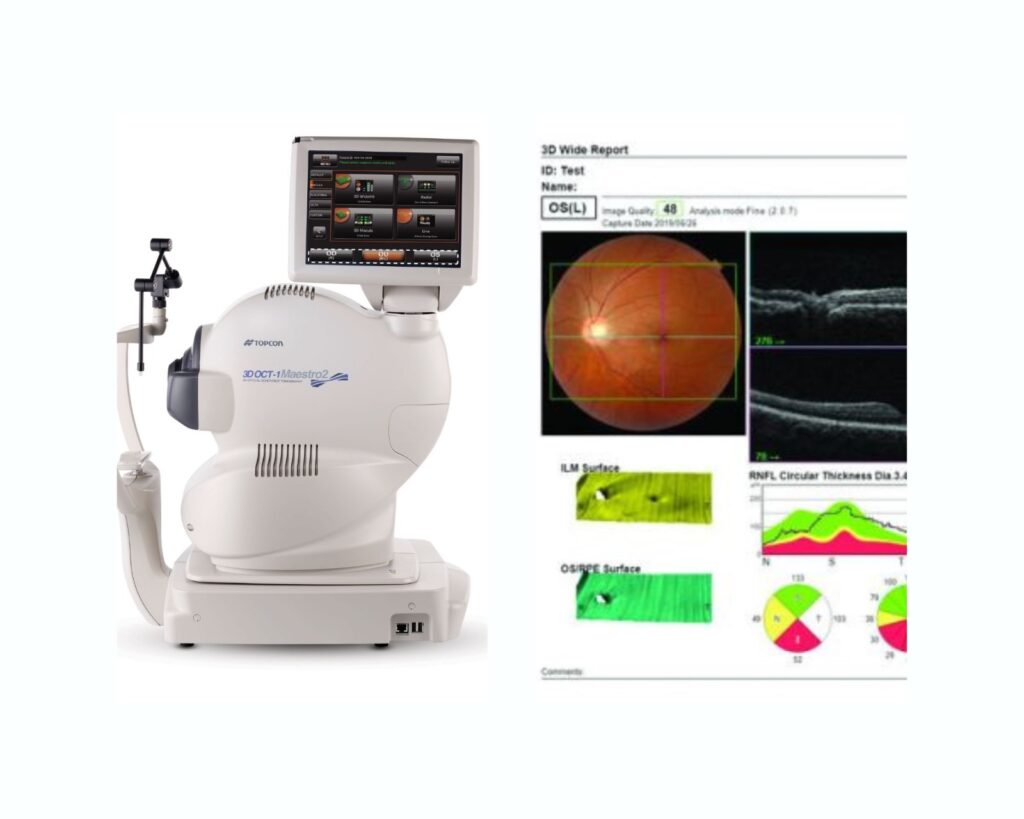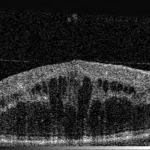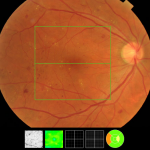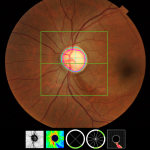OCT
Optical Coherence Tomography
The Scientific Stuff!
Using a Topcon state-of-the-art 3D OCT camera, your eye professional will take both a digital photograph and a three dimensional cross sectional scan of the back of your eye in one sitting. This allows us to instantly diagnose a number of common conditions. The scan is non-invasive, painless, simple and quick. What’s more, the software can automatically detect even the most subtle changes to the retina with every eye test you take. This gives you an invaluable ongoing record of the health and condition of your eyes.
What can the scan check for?
Common conditions identified through regular OCT screening include:


1. Age-related Macular Degeneration
Macular degeneration causes the gradual breakdown of the macula (the central portion of the eye). OCT can identify this condition and its type (there are two types, wet and dry) and also monitor its progress, for example, if you are undergoing treatment for such a condition. Unfortunately the risk of developing macular degeneration increases with age, and it is the most common cause of vision loss in individuals over the age of fifty.
2. Diabetes
Diabetic retinopathy is a major cause of visual impairment among adults. Here in the UK, more than 4.3 million people have been identified as having diabetes. OCT examination enables early detection, which greatly improves the success rate of treatment.


3. Glaucoma
Glaucoma damages the optic nerve at the point where it leaves the eye. Recent statistics suggest that some form of glaucoma affects around two in every 100 people over the age of 40. The danger with chronic glaucoma is that there is no pain and your eyesight will seem to be unchanged, but your vision is being damaged. An OCT examination will confirm if you are at risk, or indeed what stage of glaucoma you may have.
4. Macular Holes
A macular hole is a small hole in the macula – the part of the retina which is responsible for our sharp, detailed, central vision. This is the vision we use when we are looking directly at things, when reading, sewing or using a computer. There are many causes of macular holes. One is caused by vitreous detachment, when the vitreous pulls away from the back of the eye and sometimes it does not ‘let go’ and eventually tears the retina, leaving a hole.


5. Vitreous Detachments
Vitreomacular traction can clearly be diagnosed through OCT providing invaluable information about the current relationship between the vitreous and the retinal surface of the eye. As people get older the vitreous jelly that takes up the space in our eyeball can change. It becomes less firm and can move away from the back of the eye towards the center. In some cases parts do not detach and cause ‘pulling’ of the retinal surface. The danger of a vitreous detachment is that there is no pain and your eyesight will seem unchanged but the back of your eye may be being damaged.
Contact Us:
Bridge Street: 01442 253 858
Stoneycroft: 01442 264 897
your personal case manager will ensure thate you receive the best possible care
